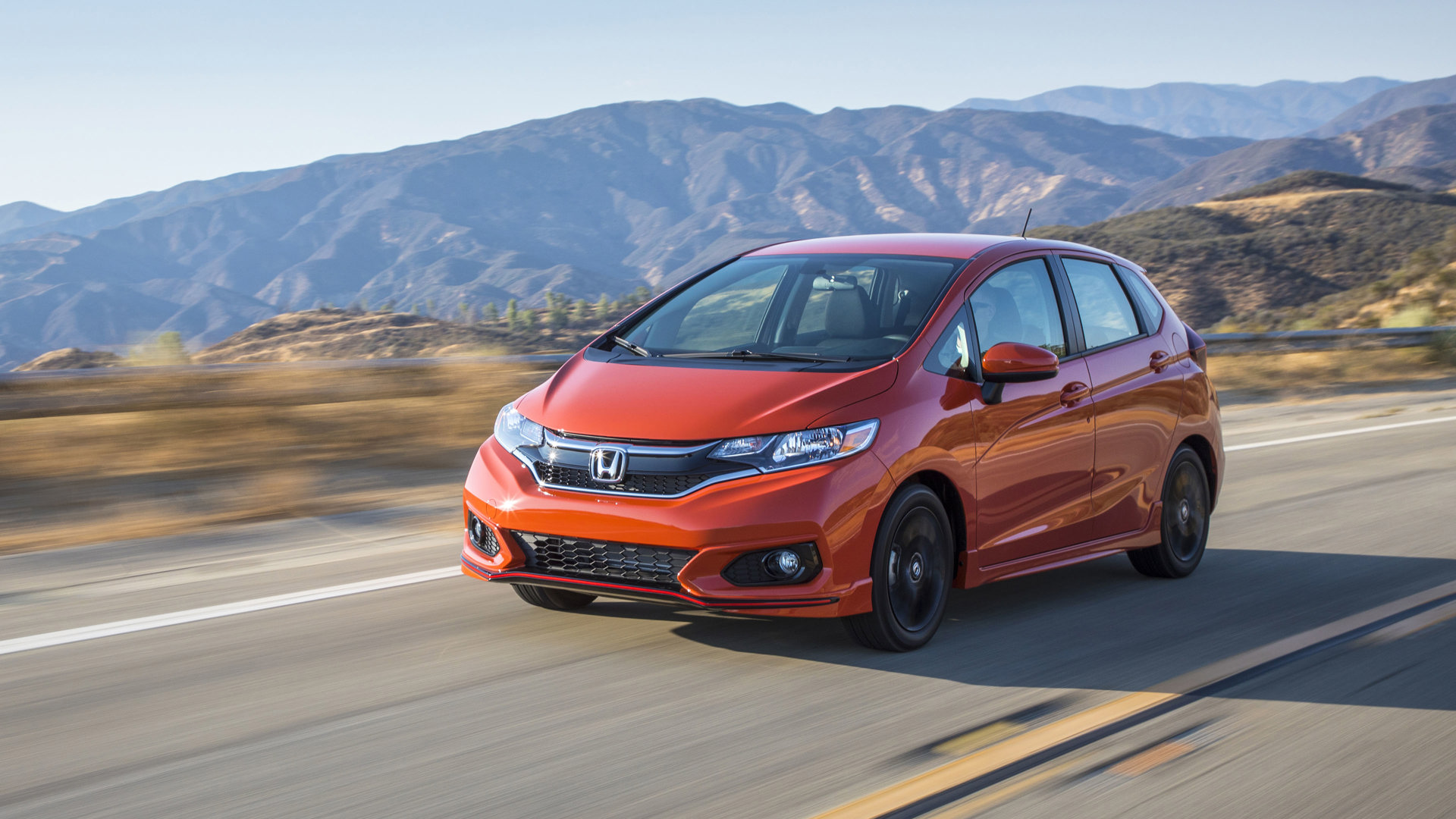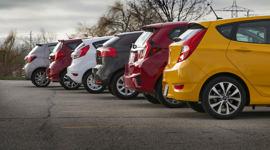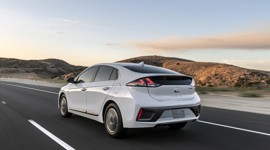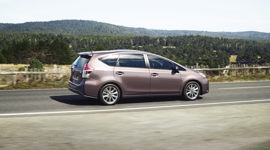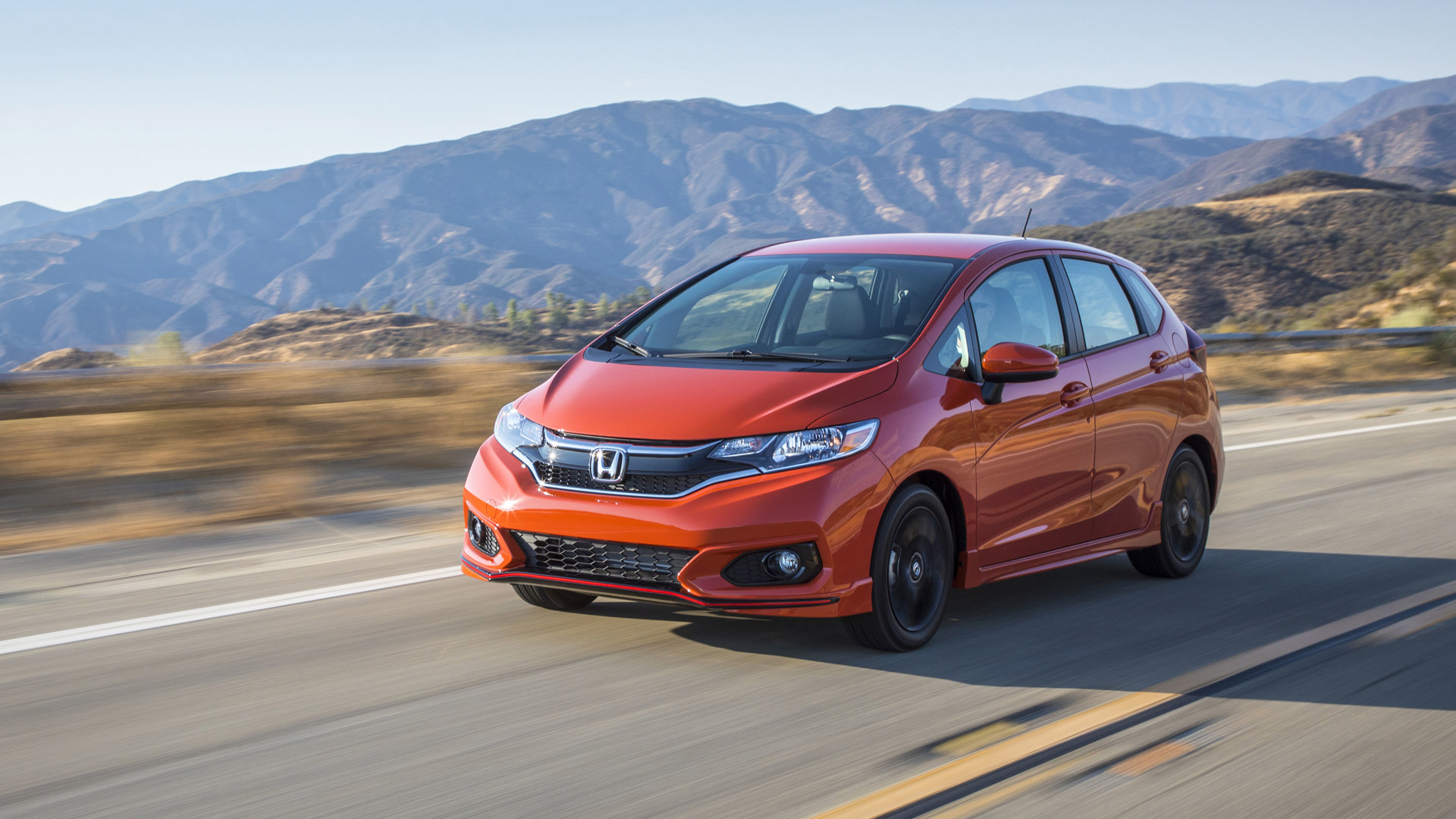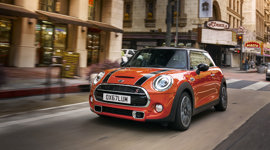To win in this segment, you’ve got to be good. While building a luxury car has its own challenges, most can be solved with a liberal application of money. But for a subcompact car, price is the bottom line. An automaker not only has to produce a vehicle that’s attractive and well built, offering the latest technology and safety features, all while being reliable, practical, and versatile – they’ve got to ensure that it remains economical, too. Every car that made this shortlist fulfilled most of these criteria, but only one “fit” them all. Our team of 20 expert auto writers considered every vehicle available in the segment to vote on our group of finalists: the Hyundai Accent, Kia Rio, Nissan Micra, Honda Fit, and Mini Cooper.
Our winner, the Honda Fit, has impressed our jury the most. This subcompact has continued to wow us since its 2007 North American debut, regularly finishing among the top three in our autoTRADER.ca group comparison tests, and receiving accolades from our team of writers on road tests.
The Fit set a new benchmark for small car flexibility that has yet to be matched. Its Magic Seat system can be configured several ways; rear seats folded flat to create a voluminous cargo hold, or flipped up to accommodate tall and wide items. With an astonishing 1,495 litres of total cargo space, the Fit is as roomy as some crossovers, and rear passengers get as much legroom as a full-size Accord sedan.
It’s not the cheapest entry of our group, but the Fit’s $17,349 starting price offers good value, with standard Bluetooth, back-up camera, steering wheel audio controls, and USB ports. All but the base model comes with a 7-inch touchscreen with Apple CarPlay and Android Auto.
autoTRADER.ca contributor Jil McIntosh made an important comparison in her recent review of the Fit: “Honda’s usually priced a bit higher than the competition, and you can get into a base Nissan Versa Note for $14,698, into a Hyundai Accent hatchback for $14,599, or a Toyota Yaris hatchback for $15,690. You have to do the apples-to-apples comparison when choosing, though. The base Fit is $792 more than the base Versa, but has a stronger engine, power windows, power locks, LED taillights, and that split-folding rear seat that the Versa does not, along with a six-speed manual to the Versa’s five-speed.”
For a small car, there’s plenty of big car technology available on upper trim levels. Additional features include automatic headlights, satellite radio, navigation, automatic climate control, and a continuously variable transmission.
The cabin is simple, clean and well-designed. It’s an ergonomically friendly car with controls that are straightforward and user-friendly – including large and easy-to-use knobs. There’s nothing tricky about the infotainment system, and the seats flip up, or fold down via a simple lever.
The sole engine choice for the Fit is a 1.5L four-cylinder mated to a CVT – in which case it produces 128 hp and 113 lb-ft of torque; or a six-speed manual and produces 130 hp and 114 lb-ft.
According to autoTRADER.ca expert Simon Hill, the Fit’s six-speed is “one of the nicest-shifting manuals this side of a Mazda MX-5 roadster, making it rewarding to row through the gears.”
The CVT, however, as Jil McIntosh pointed out “can give you a background drone, especially at highway speeds.”
The inline four-cylinder engine provides adequate acceleration for this segment, though it does get buzzy when pushed hard. Those who prefer to do their own shifting will find the engine is more responsive with the six-speed manual.
The Fit handles well, though the suspension is softer than earlier models, which were sportier and more stiffly sprung. Most buyers in this segment will prefer a more cushiony ride, and the Fit still corners well with a minimum of body roll. Previous complaints of road and wind noise have been addressed by increased insulation. The Fit’s an easy car to live with; it can dart in and out of urban traffic, fit into tight parking spots, and is the undisputed champion of accommodating an enormous variety of cargo.
Once upon a time, the small economy car buyer could expect little beyond a low price tag and decent fuel consumption, and unfortunately that often excluded expensive life-saving safety technology. But the intensity of competition in the segment has increased buyer expectations, and the “democratization” of technology that was once exclusive to the premium buyer, has seen a welcome trickle-down of safety tech into entry-level economy cars.
The Fit received good scores from the Insurance Institute for Highway Safety (IIHS), and is available with the Honda Sensing driver assistance package, which includes adaptive cruise control, lane-keeping assist, lane-departure warning, forward collision warning, road-departure mitigation, and collision-mitigation braking.
Today’s driver is more concerned than ever about fuel consumption and the Fit’s fuel economy numbers are at the top of the segment; it’s rated at 7.0L/100 km city, 5.9 L/100 km on the highway, and 6.5 L/100 km combined when equipped with the CVT.
Overall, the Fit is fun to drive, offers excellent value, and like most Hondas, tends to be very reliable and retains its resale value. It exemplifies everything our jury was looking for in the compact car segment.
